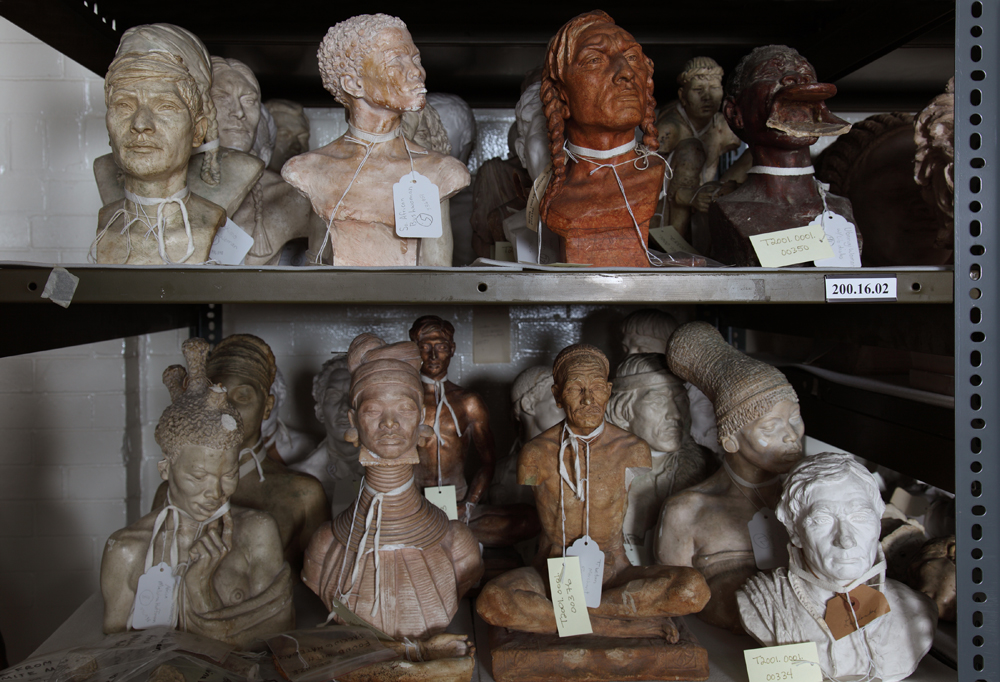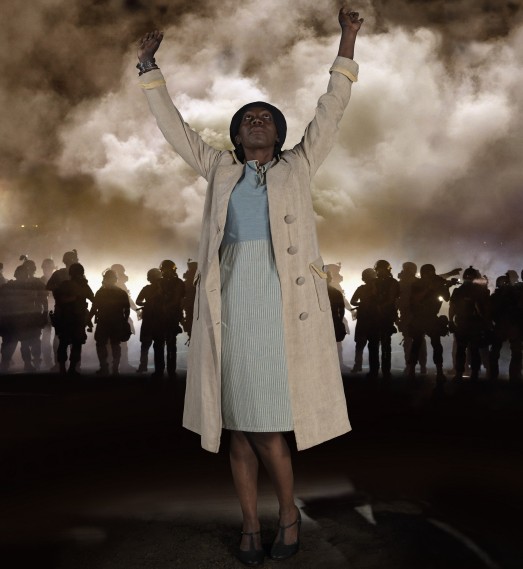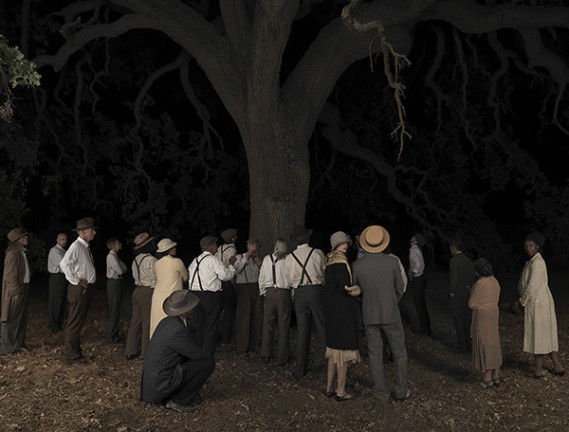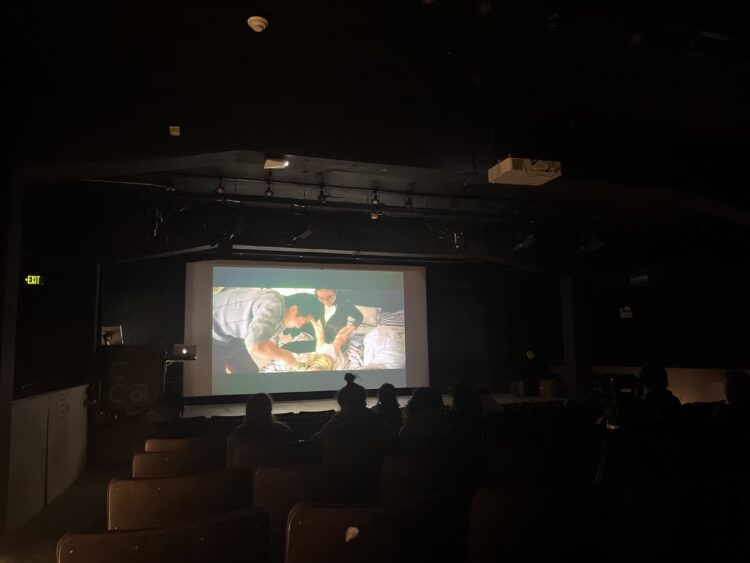Ken Gonzales-Day Examines Racially-Motivated Killings, Past and Present

Ken Gonzales–Day (2012 Visual Arts) will premiere his Creative Capital-supported project with the solo exhibition, Ken Gonzales–Day: Run Up, on view at Luis De Jesus Los Angeles from April 4 through May 9, 2015. Run Up is the latest chapter in Gonzales–Day’s acclaimed Erased Lynching series, selections of which have been acquired by the Smithsonian Institution, the Norton Museum of Art and numerous private collections, and exhibited in museums and galleries in Los Angeles, New York, Toronto, London, Paris, Vienna, Mexico City and other major cities. I connected with him to learn more about this timely project.
Jenny Gill: Your past work has involved a lot of archival research, exploring histories of racial profiling and racially motivated crime. These issues have really come to the forefront in the past year with the shootings of Trayvon Martin in Florida, Michael Brown in Ferguson, and other police violence. Did this body of work shift in response to those current events?
Ken Gonzales-Day: The work is directly informed by recent events but my research on vigilantism and lynching began in 2000. The early research looked at the lynching of Mexicans and other people of color in California as a way of expanding our understanding of the history of lynching in the United States, and to more accurately reflect its impact in the American West. My book, Lynching in the West: 1850-1935 (Duke, 2006) included over 350 cases of lynching and vigilantism in California and was able to document the many communities of color that were touched by this history. This new series of works grew out of that research but it is also responding to both the similarities, and the differences, between lynching and the kinds of racialized violence that are occurring today.
The film was planned for many months and was shot on August 6, 2014. As most Americans know, Michael Brown was killed in Ferguson on August 9, and Ezell Ford, a mentally ill black man, was shot in Los Angeles on August 11. Less familiar is the death of Omar Abrego, a Mexican-American man who died on August 2, 2014, after being beaten by police.
I visited the locations of the shootings in both Ferguson and Los Angeles—I felt visiting the sites was an important thing to do. For me, it was related to my earlier photographic project, Searching for California Hang Trees, in which I sought to visit and sometimes photograph historic lynching sites across California.
Visiting the locations of these shootings was a very different experience, particularly because of the spontaneous memorials that have sprung up at the sites and the often personal mementos that are left behind.
Jenny: Can you describe the three bodies of work in the exhibition at Luis De Jesus?
Ken: The main body of work is a short film entitled Run Up, which is a restaging of a lynching that occurred in Santa Rosa, California in 1920. This particular case, which has long been mischaracterized as simply an example of mob vigilantism, probably included police involvement. It may also be the last documented lynching of a Latino in California (there are other undocumented cases). In addition to the film, there will be a small selection of photographic images that were shot at the same time, but which are not film stills.
The film tells just one small episode from what was actually a triple lynching, in which the victims were two white men and one Latino man known as Charlie Valento or “Spanish Charlie.” This triple lynching, like all lynchings, remains “unsolved” today, since no lynch mobs were ever prosecuted.
The film is also meant to draw parallels between the past and the present, and to invite viewers to consider history from a slightly different perspective. Unlike previous bodies of work in which I used found or archival imagery, this time I really wanted to create something that could speak to people in a new way.
In a second series, some of the characters begin to migrate into current events, or are combined with images photographed during the protest marches that took place in the days following the Grand Jury’s decision in Ferguson, Missouri, to not indict Darren Wilson, the white police officer involved in the shooting death of Michael Brown.
A third series of images documents the destructive aftermath of the riots in locations throughout the city of Ferguson, as well as images documenting memorials honoring Ezell Ford.
Jenny: What do you hope visitors to the gallery show will take away? Who would you most like to reach with this work?
Ken: In making the film, I felt like the restaging of a 1920 lynching was relevant to our own times, not simply because the topic has never been the subject of a major (or minor) film, but because so many aspects of the Latino experience are not even recognized as part of the American experience.
In combining these seemingly disparate events, the exhibition seeks to draw parallels and distinctions between the history of lynching and police shootings, racialized violence and political protest. The work at times blends events, narratives, and even the figures as an exploration and questioning of the very terms that are driving and transforming our understanding of racial formation today. I would love for the work to be seen beyond the “white cube” space of the gallery, and perhaps find its way to the streets and classrooms of our daily lives.
VIDEO: Ken Gonzales-Day presenting at the Creative Capital Artist Retreat in 2013
Jenny: You received the Creative Capital Award in 2012. How has CC’s support helped your project?
Ken: Creative Capital has been an incredible force in shaping this project, and in fact it was Creative Capital’s emphasis on pushing oneself, and one’s work, that allowed me to even bring myself to imagine making a film (even a very short one). I am incredibly thankful for all the resources, from workshops and workbooks, to getting to meet some of the many incredible artists CC has funded, and even for the intense but incredibly productive summer boot camp.
![Ken Gonzales-Day, Untitled photo from Profiled series, 2011. Pierre-Jean David d’Angers, Bust of Ann Buchan Robinson, Museum of the City of New York; Joseph Nollekens, Venus, The J. Paul Getty Museum, Los Angeles, CA.; Malvina Hoffman, Japanese Woman [337087].](https://creative-capital.org/wp-content/uploads/legacy/2015/03/1CC-569x206.jpg)
Ken Gonzales-Day, untitled photo from “Profiled” series, 2011. Pierre-Jean David d’Angers, Bust of Ann Buchan Robinson, Museum of the City of New York; Joseph Nollekens, Venus, The J. Paul Getty Museum, Los Angeles, CA.; Malvina Hoffman, Japanese Woman [337087].
Ken: I am working on two public art projects. One will be a series of photographic images to be installed in May at Union Station in downtown Los Angeles as a part of the Metro Art Program. The second is a public artwork that was commissioned by the Los Angeles Department of Cultural Affairs for the Los Angeles Metro Division of the LAPD and will be completed this summer. It is located on Temple Street just south of the 101 Freeway near Echo Park in Historic Filipinotown in Los Angeles. The existing building at the project site was the Rampart Division facility until the 1990s, and is now being renovated to become the new home of the LAPD’s Metropolitan Division. The project is entitled The Outdoor Museum, and is intended to bring art to the community as well as to reflect on the history of racial depiction by using photographic images of sculptures depicting race from many different museums and cultural contexts.
The sculptures depicted include busts and casts of persons, ancient and modern, young and old. Moving around the site, the viewer will encounter a series of images that once represented people from five continents. There are figures depicting persons from Africa, Australia, The Americas (Colombia and Mexico), North American (Native Americans), Asia, Southeast Asia, and Europe, along with figures from the Philippines and the Ancient world. Other panels reference moments from the history of racial formation from the Enlightenment to the Second World War.
“Ken Gonzales-Day: Run Up” was on view at Luis De Jesus Los Angeles from April 4 through May 9, 2015.


